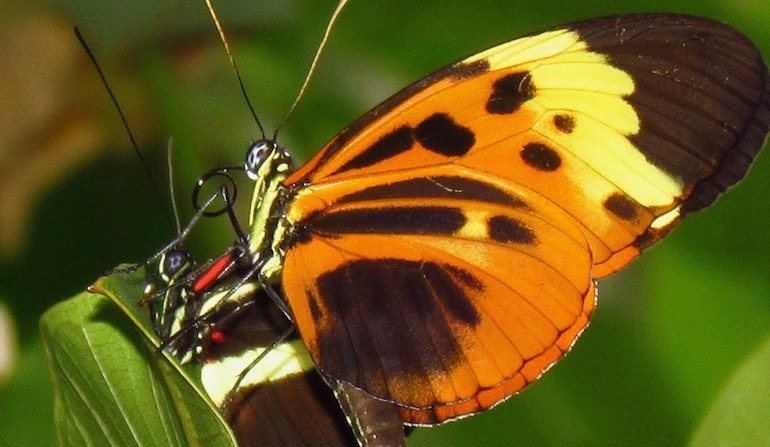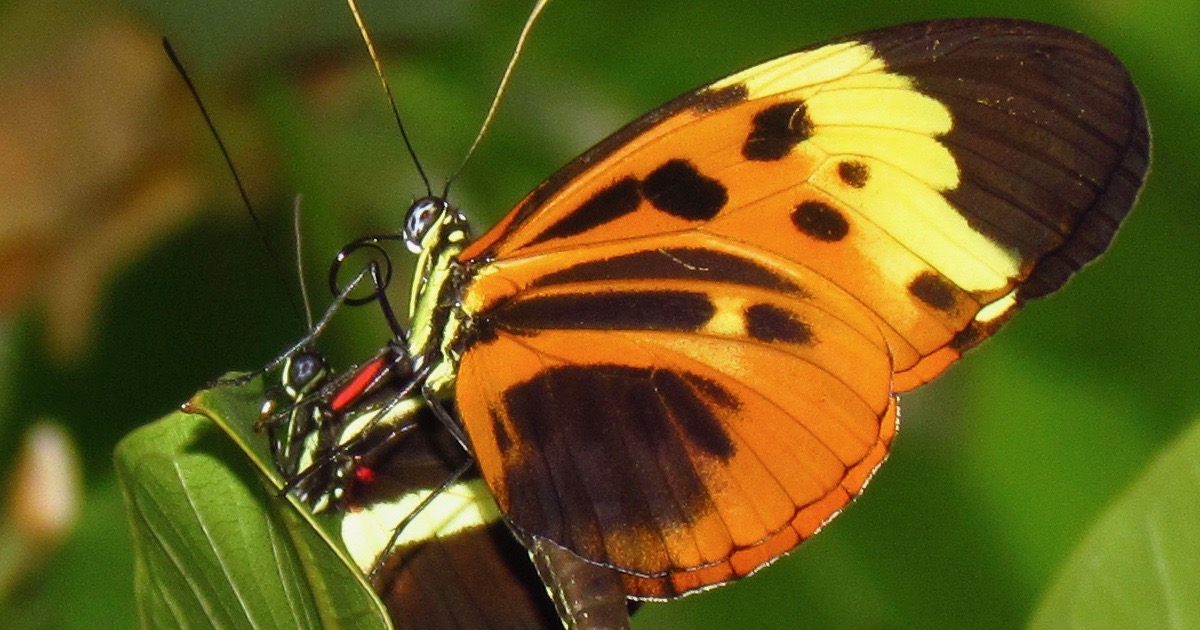 Intelligent Design
Intelligent Design
How Butterflies “Evolve” by Design


Butterflies, those universally loved flying works of art, offer many reasons to celebrate design in nature.
- They showcase aesthetic beauty beyond the requirements of survival (see “Beauty, Darwin and Design,” featuring Paul Nelson).
- Their migrations show foresight over multiple generations.
- The one-gram Monarch butterflies astonish biologists with their exceptional endurance to survive hardships while flying thousands of miles on paper-thin wings (see “2-Minute Wonder: A Monarch’s Journey“).
- Their navigation systems exhibit stunning accuracy to arrive at locations they have never seen.
- Their keen senses can find the right host plants from miles away; they can smell very faint pheromones for mating; and they can distinguish precise angles of sunlight for orientation and timing of migration.
- Their wing scales, organized into “photonic crystals,” give precision control of light waves to create iridescent colors.
- Last, but not least, their metamorphosis from egg to caterpillar to chrysalis to flying adult is, as Illustra Media showed in the film Metamorphosis, like turning a Model T into a helicopter inside a garage by breaking down and reassembling all the parts.
Evolutionists know all these facts about butterflies, but some of them, searching for Darwin’s mechanism at work everywhere (even in challenging design cases like butterflies), focus on wing patterns. They try to tease out phylogenetic trees among closely related species, like the Heliconius butterflies of South America, hoping to find evidence for Darwin’s unguided mechanism of mutation and natural selection at work.
New findings cast doubt on those Darwinian assumptions, but before analyzing them in a post tomorrow, let’s take a look at other new findings about butterflies that fit intelligent design better than neo-Darwinism.
Meta-Memory
Georgetown University researchers found evidence that adult butterflies can remember things they learned as caterpillars. Larvae of tobacco hornworm moths learned to avoid certain odors when exposed to electric shocks, Science Daily reports. 77 percent of the adults, after passing through metamorphosis, avoided those same odors. New Scientist quotes one of the researchers:
“Practically everything about the two phases of the organism are so different – morphology, diet, how they move, and what they sense,” says Martha Weiss of Georgetown University in Washington, DC, in the US….
“People always thought that during metamorphosis the caterpillar turns to soup and all the ingredients are rearranged into the butterfly or moth,” says Weiss. “That clearly isn’t what happens. Parts of the brain are retained that allow memories to persist through this very dramatic transition.” [Emphasis added.]
It’s like having the computer of a car survive as it transitions to a helicopter, and still work for both vehicles. This would require foresight, so that the memory of the odor produces the same response inside another form of the animal containing very different parts.
The open-access paper by Douglas Blackiston, Elena Casey, and Martha Weiss is published in PLOS ONE, “Retention of Memory through Metamorphosis: Can a Moth Remember What It Learned As a Caterpillar?“ The authors say the findings have “ecological and evolutionary implications,” but they only speculate about the latter. They think it “could further lead to the formation of host races or even to eventual sympatric speciation,” but do not elaborate. That kind of speciation would not innovate new organs or structures, anyway.
Industrial Melanism
Another news item about Lepidopterans (moths and butterflies) should not be passed up, since it deals with one of the icons of evolution: peppered moths. Researchers at the University of Liverpool found the same genes for industrial melanism in three moth species. In fact, they point out, “dark forms increased in over 100 other species of moths during the period of industrial pollution.”
Rather than exemplify random mutation and natural selection, this kind of genetic convergence could rely on epigenetic mechanisms that adjust wing color to environmental conditions. The authors of the paper in the Royal Society Biology Letters (open access) reflect on the possibility that tuning of expression of the cortex gene, a “genetic hotspot,” produces the different forms rapidly, without requiring de novo mutations to be selected. In fact, one wouldn’t want random mutations to tinker with this gene, due to possible negative pleiotropic effects downstream.
Compared to the genetics of melanism in Drosophila, where pigmentation differences within and between species have been traced to cis-regulators of a subset of pigment synthesis genes, the emerging pattern for cortex suggests greater developmental constraints in the Lepidoptera. This may relate to the greater complexity of the lepidopteran wing surface, in which the colour and structure of scales are intricately linked. As a high-level cell-cycle regulator, which appears to determine pattern boundaries rather than pigment per se, tinkering with cortex expression may avoid deleterious pleiotropic effects of mutations to melanin pathway genes downstream. A tendency for cortex mutations to produce dominant melanism, through a positive association with upregulation, would also be an advantage.
Intelligent foresight could explain how different moths show “rapid adaptive responses to the same anthropogenic factor” (i.e., industrial soot), simply by regulating the existing hotspot gene cortex. The paper concludes:
Intriguingly, variation within the same gene (cortex) controls melanism for crypsis in the peppered moth, Biston betularia, and mimic wing patterns in Heliconius butterflies. This genetic convergence suggests that cortex, and possibly the region surrounding it, is a genetic hotspot for lepidopteran wing pattern evolution.
And that sets us up nicely for a post tomorrow on non-Darwinian evolution in wing patterns.
Photo: Numata Longwing, a Heliconius butterfly, by Carleton University, via Wikimedia Commons.
